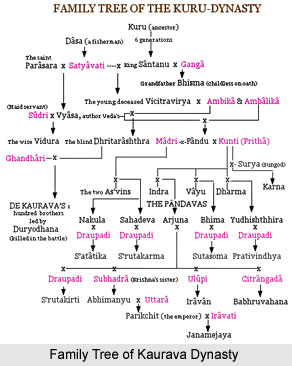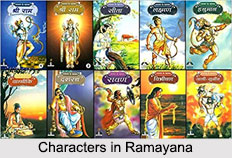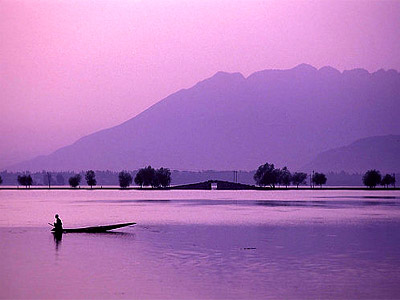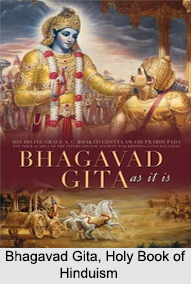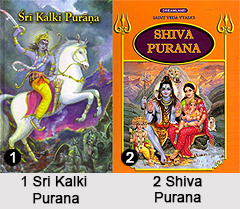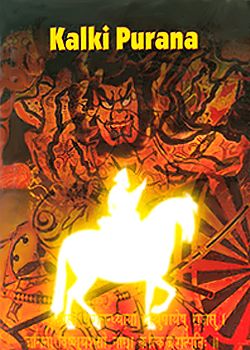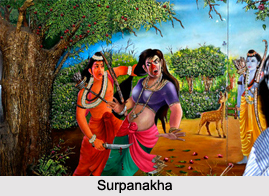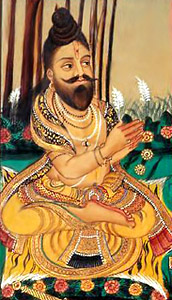 Parasara was one of the greatest sages of ancient India, as mentioned in the Indian Puranas. The son of Shakti and the grandson of Vasishta, Parasara lived about 500 years ago and still stands tall as one of the revered figures of astrology in India. He wrote and compiled many Vedic scriptures, and is best known for the Brihat Parasara Hora Sastra, which forms the fundamental text of Vedic astrology. The birth place of sage Parasara is believed to be at Panhala fort in Kolhapur district of Maharashtra. A cave supposed to be of `Parashar Muni` is present at the fort.
Parasara was one of the greatest sages of ancient India, as mentioned in the Indian Puranas. The son of Shakti and the grandson of Vasishta, Parasara lived about 500 years ago and still stands tall as one of the revered figures of astrology in India. He wrote and compiled many Vedic scriptures, and is best known for the Brihat Parasara Hora Sastra, which forms the fundamental text of Vedic astrology. The birth place of sage Parasara is believed to be at Panhala fort in Kolhapur district of Maharashtra. A cave supposed to be of `Parashar Muni` is present at the fort.
Parasara was raised by his grandfather Vasishta as he lost his father at an early age. Legend has it that his father, Shaktimuni, was on a journey once when he came across and angry Rakshasa. This demon devoured Parasara`s father. This episode greatly angered Parasara and in order to take avenge his father`s death; he commenced a sacrifice to effect the destruction of all the Rakshasas. But he was persuaded against by his grandsire, Pulastya who showed him that his father`s death was the work of destiny.
Pulastya was a major influence in the life of Parasara. It was Pulastya who taught him the Vishnu Purana which he related to Maitreya, to convey the truths that the world was created from Lord Vishnu and that the universe exists in him. He further went on to say that. He further said him that Parasara is the cause of its continuance and cessation that he is the world. Parasara learned astrology from Maharishi Saunka, who in turn had received his instructions from the son of Lord Brahma, Lord Narad.
Parasara went on to father a son, Ved Vyasa, with the maiden Satyavati, the daughter of a ferryman. Vyasa carried forward his father`s literary legacy and went on to become a very famous sage and writer. He has written 18 Puranas and is most widely known for having authored the Mahabharata.
Parasara has been instrumental in laying down the foundations of Indian Vedic astrology by means of the Brihat Parasara Hora Sastra. The Sanskrit in which it is composed dates back to the 7th or 8th centuries CE. Apart from this, a number of other famous works have been attributed to the great Maharishi. He has authored a number of verses in the Rig Veda. In Rig Veda 1, verses 65 to 73 have been said to have been written by him as also verse 97 of Rig Veda 97. Sage Parasara has also written the Parasara Smriti, also called the Parasara Dharma Samhita, which is a code of laws said to be applicable for the present age of Kalyug. He is the speaker of the Vishnu Purana, considered by scholars to be on of the earliest puranas. Parasara is also said to be the speaker of the Vrksayurveda or the science of trees. It is one of the earliest texts on botany, considered to be an ancient botany primer for the students of Traditional Indian Medicine.
Despite being a much-revered sage of India, the identity of Sage Parasara is still much disputed. Parasara was also the Vyasa of the twenty-sixth Dwapara, and a teacher of a branch of Rig Veda, and of the Sama Veda. Parasara was also the name of the author of a celebrated code of laws. This Parasara is mentioned by Yajnavalka in his standard work, and often quoted by the commentaries. There is also the third person Parasara, who was the reputed author of a Tantra. Another Parasara was name of the authors of several writers on medicine and astrology. Broadly speaking, there are two levels at which the Sage is identified -one is based on a long- standing myth and the other is based on empirically available evidence, such as carbon dating of the texts available.
Whatever be the nature of doubts and questions raised over the identity of the Great sage, and whether or not he was a single person or a great saint who inspired a long tradition of followers, the fact remains that Sage Parasara has been one of the most revered and influential saints of India.













